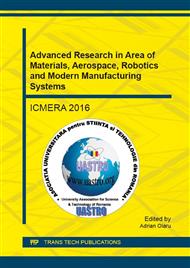p.183
p.188
p.194
p.204
p.210
p.219
p.225
p.231
p.236
Part Accuracy Management by Topological Mapping of Deviations
Abstract:
Despite modern manufacturing processes are characterized by a continuously increasing accuracy, geometric deviations inherently appear on every manufactured part so, for quality-aware companies, it is essential to control and to manage them. This paper introduces a new type of part geometrical model, namely the part topological map, in connection with a new approach in part accuracy management. The part topological map enables a global analytical & synthetic approach of the problems related to tolerancing domain and a generalization of the “part accuracy” concept. The part geometry is seen as a stand-alone ensemble of surfaces dimensionally related, unitary and with its own shape, dimensions and position. The real geometry has also a global, unitary deviation, characterized through deviation features. Each component surface is represented in a particular manner, unrolled, while its deviation features are assessed by using series expansion of the deviations corresponding to a cloud of measured points. A method for effectively realizing the topological map of a part deviation and a numerical exercise to illustrate the method application in a concrete case are also included.
Info:
Periodical:
Pages:
210-216
Citation:
Online since:
December 2016
Authors:
Price:
Сopyright:
© 2017 Trans Tech Publications Ltd. All Rights Reserved
Share:
Citation:


